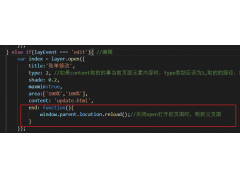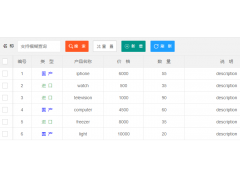Matching the first/nth element of a certain type in the entire document(匹配整个文档中某种类型的第一个/第n个元素)
问题描述
如何指定整个文档的:first-of-type?
我想为 HTML 的第一个 <p> 设置样式,无论它位于何处(我不想写 section p:first-of-type 因为它可能位于不同 HTML 文档的其他位置).
I want to style the first <p> of the HTML, no mater where it is located (I don't want to write section p:first-of-type because it may be located elsewhere in a different HTML document).
p {
background:red;
}
p:first-of-type {
background:pink;
}
p:last-of-type {
background:yellow;
}<body>
<section>
<p>111</p>
<p>222</p>
<p>333</p>
</section>
<p>444</p>
<p>555</p>
</body>推荐答案
不幸的是,仅使用 CSS 是不可能的.:first-of-type 伪类 状态:
With CSS alone this unfortunately isn't possible. The documentation for the :first-of-type pseudo-class states:
:first-of-type 伪类表示一个元素,它是其父元素的子元素列表中其类型的第一个兄弟元素.
The
:first-of-typepseudo-class represents an element that is the first sibling of its type in the list of children of its parent element.
这意味着 :first-of-type 应用于其类型的第一个元素,相对于其父元素,而不是文档的根(或 body 元素,在这种情况下).
This means that :first-of-type is applied to the first element of its type relative to its parent and not the document's root (or the body element, in this case).
我们可以通过引入一些 JavaScript 来实现这一点.为此,我们只需要 JavaScript 的 querySelector() 方法,该方法从指定的选择器中提取第一个匹配元素.
We can achieve this by introducing some JavaScript. All we need for this is JavaScript's querySelector() method, which pulls the first matching element from the selector specified.
在这个例子中,我将你的 :first-of-type 伪类改为first-of-type"类,然后使用 JavaScript 将这个类添加到使用 querySelector('p') 时返回的元素:
In this example I've altered your :first-of-type pseudo-class to instead be a class of "first-of-type", then used JavaScript to add this class to the element returned when using querySelector('p'):
document.querySelector('p').className += ' first-of-type';p {
background:red;
}
p.first-of-type {
background: pink;
}<body>
<section>
<p>111</p>
<p>222</p>
<p>333</p>
</section>
<p>444</p>
<p>555</p>
</body>对于 :nth-child 和 :last-of-type,我们可以使用 JavaScript 提供的类似方法:querySelectorAll().此方法将 所有 匹配元素拉入 NodeList(类似于数组),然后我们可以通过索引遍历或从内部选择特定元素:
As for :nth-child and :last-of-type, we can instead make use of a similar method JavaScript gives us: querySelectorAll(). This method pulls all matching elements into a NodeList (which is similar to an array), which we can then iterate through or select specific elements from within through the index:
var elems = document.querySelectorAll('p');
// nth-of-type = NodeList[n - 1]
// e.g. to select the 3rd p element ("333"):
if (elems.length >= 2)
elems[2].className += ' nth-of-type';
// last-of-type = NodeList length - 1
if (elems.length)
elems[elems.length - 1].className += ' last-of-type';p {
background:red;
}
p.nth-of-type {
background: pink;
}
p.last-of-type {
background: yellow;
}<body>
<section>
<p>111</p>
<p>222</p>
<p>333</p>
</section>
<p>444</p>
<p>555</p>
</body>请注意,我在两个选择器周围都包含了 if 语句,以确保 elems NodeList 有足够的元素,否则会抛出错误.
Note that I've included if statements around both selectors to ensure the elems NodeList has enough elements, otherwise an error will be thrown.
这篇关于匹配整个文档中某种类型的第一个/第n个元素的文章就介绍到这了,希望我们推荐的答案对大家有所帮助,也希望大家多多支持编程学习网!
本文标题为:匹配整个文档中某种类型的第一个/第n个元素


基础教程推荐
- jQuery File Upload - 如何识别所有文件何时上传 2022-01-01
- Node.js 有没有好的索引/搜索引擎? 2022-01-01
- 每次设置弹出窗口的焦点 2022-01-01
- 如何在特定日期之前获取消息? 2022-01-01
- 为什么我在 Vue.js 中得到 ERR_CONNECTION_TIMED_OUT? 2022-01-01
- Javascript 在多个元素上单击事件侦听器并获取目标 2022-01-01
- 如何使用 CSS 显示和隐藏 div? 2022-01-01
- 什么是不使用 jQuery 的经验技术原因? 2022-01-01
- 如何使用sencha Touch2在单页中显示列表和其他标签 2022-01-01
- WatchKit 支持 html 吗?有没有像 UIWebview 这样的控制器? 2022-01-01

















